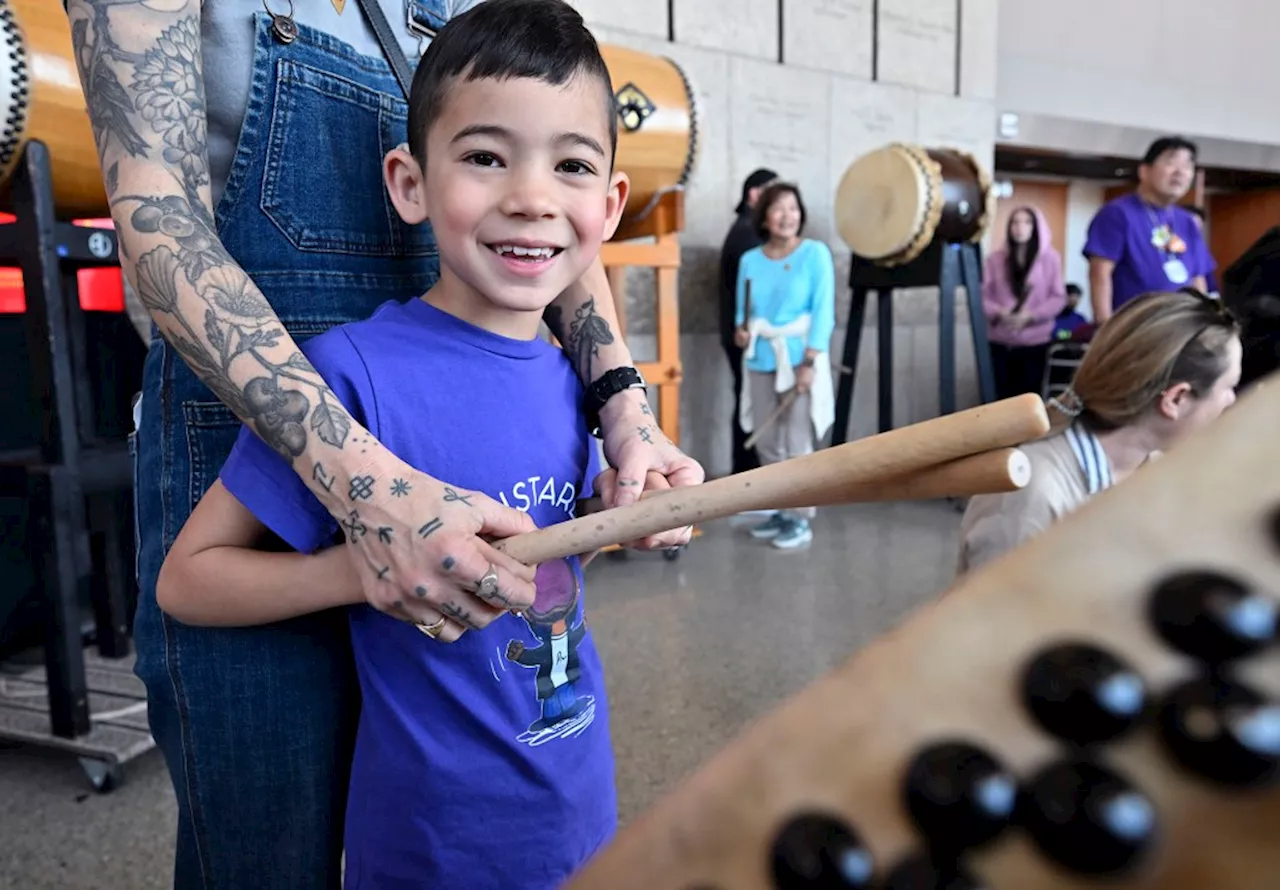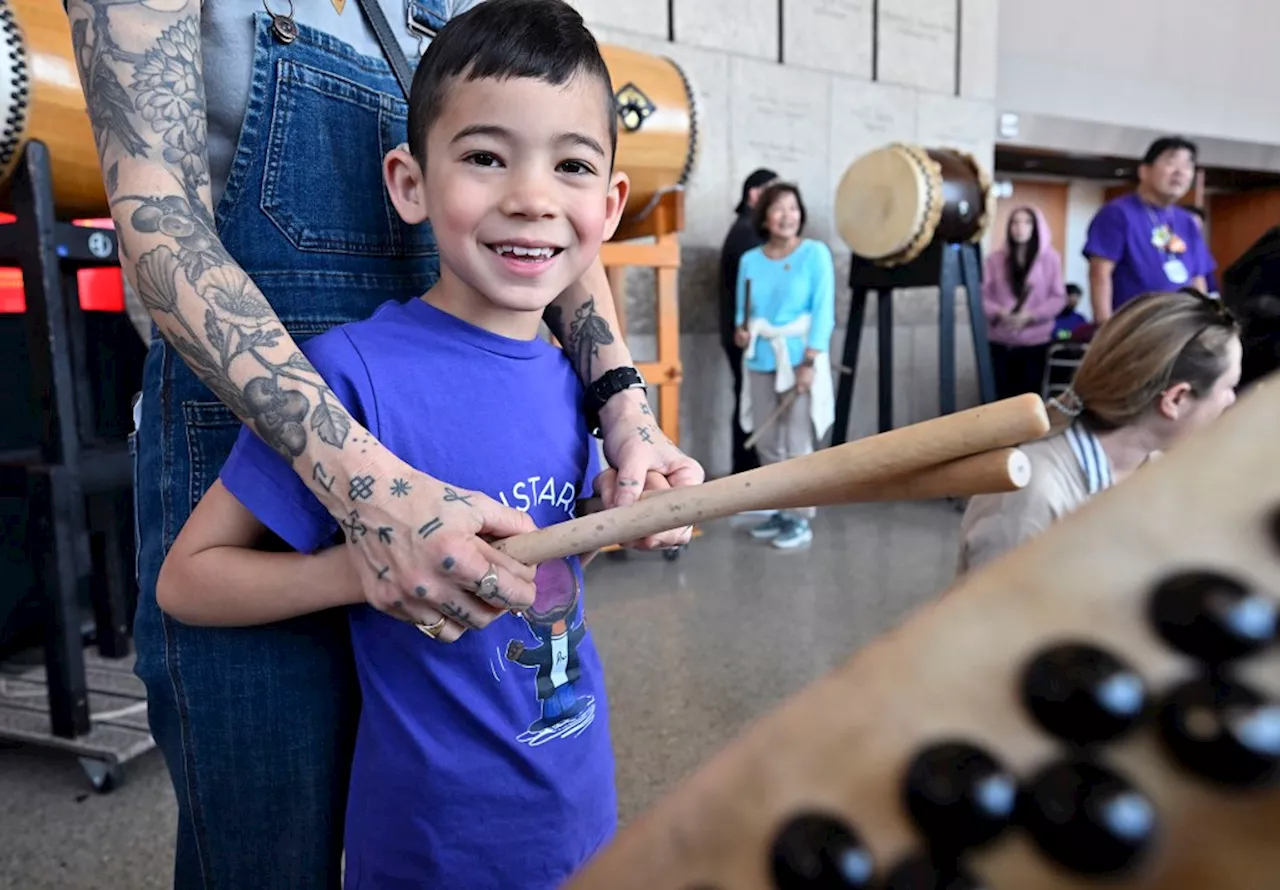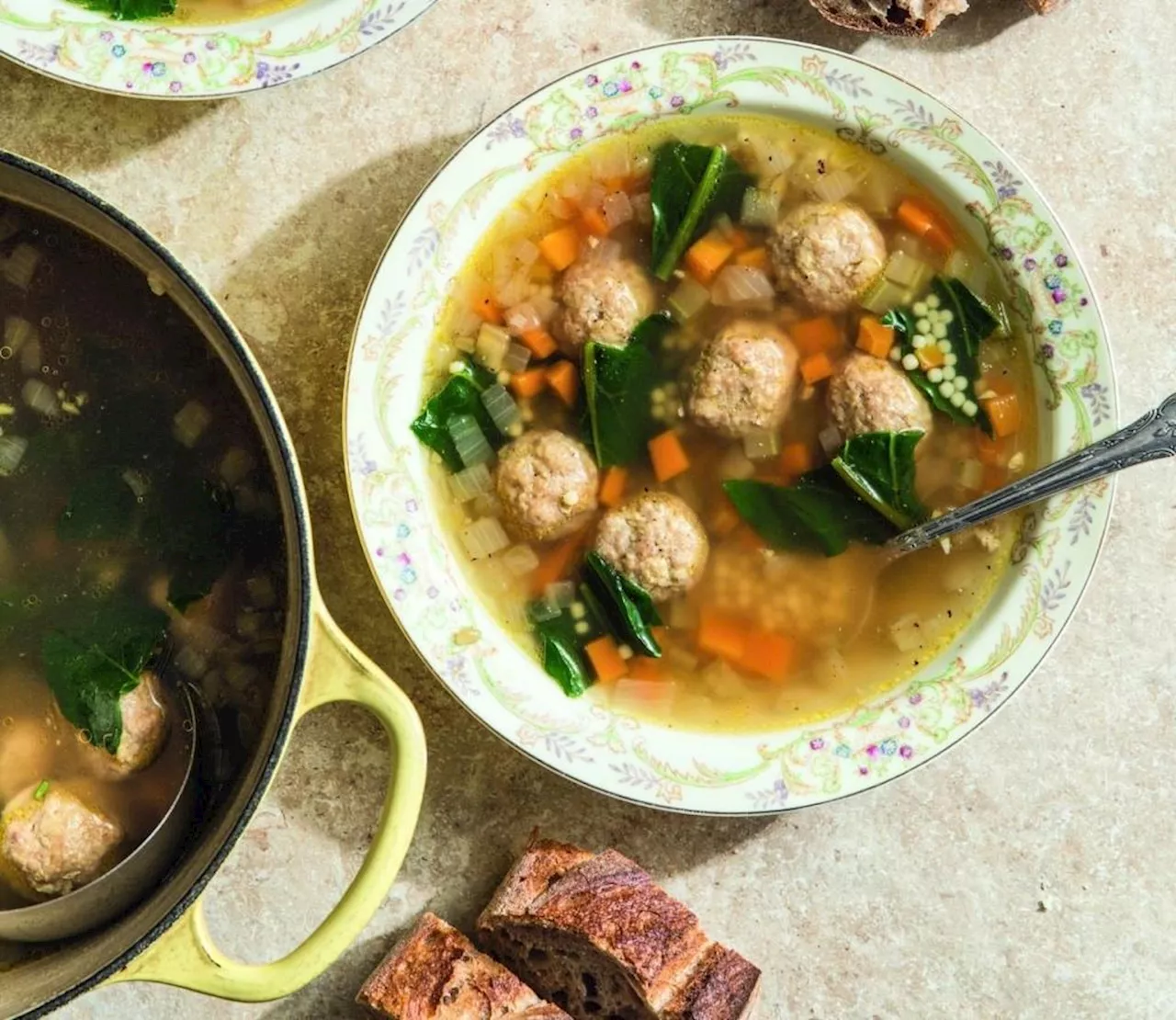Sonoko Sakai's new cookbook, “Wafu Cooking: Everyday Recipes with Japanese Style,” explores the art of blending Japanese sensibilities and flavors with Western dishes. Sakai, a Japanese-American cooking instructor, defines wafu as “Japanese in style,” encompassing both culinary and presentation elements. She emphasizes the evolution of Japanese cuisine, showcasing how dishes like gyoza and tonkatsu, influenced by Chinese and French culinary traditions respectively, were adapted to embrace Japanese tastes and ingredients.
This image released by Knopf shows a recipe for Japanese Italian wedding soup, from the cookbook “ Wafu Cooking : Everyday Recipes with Japanese Style” by Sonoko Sakai . (Rick Poon/Knopf via AP)This cover image released by Knopf shows “ Wafu Cooking : Everyday Recipes with Japanese Style,” a cookbook by Sonoko Sakai . (Knopf via AP)When Sonoko Sakai ’s mother snuck a little miso into her lasagna, she wasn’t thinking of the kind of Japanese fusion that became an American dining craze in the 1980s.
Gyoza dumplings arrived from China only about a hundred years ago. Tonkatsu, a fried pork cutlet, came from French chefs cooking in the imperial court after Japan opened to the West during the Meiji period of the late 1800s. And curry arrived when the English brought spice mixes from their Indian colonies. Each dish was adapted to be more, well, Japanese, said Sakai, a Japanese-American cooking instructor who explores this combination of influences in her new book, “Wafu Cooking.” Wafu literally means “Japanese in style.” That could mean blending Western and Japanese flavors or even adjusting a dish’s presentation or sensibility to Japanese tastes. Take tonkatsu as an example. Imperial chefs “wafued” the pork cutlets by chopping them into bite-size pieces so the meat could be picked up with chopsticks. The dish also comes with shredded cabbage to balance its richness, and with tonkatsu sauce, itself an international mashup that includes soy sauce, Worcestershire and tomato. Sakai routinely wafues Western dishes — she is pushing the use of wafu as a verb — such as a white-bean chili in her book made extra savory from soy sauce. She adds miso to her apple pie and, like her mother, to her Bolognese sauce. “I find that it enhances the flavor,” Sakai said. “It doesn’t make it alien or foreign. You just wonder why it tastes better.” Slipping in an ingredient on the sly is also a Japanese tradition, one called kakushiaji. It means “secret flavor” but Japanese cooks think of them more like secret agents, Sakai said. “I call them little ninjas.” She sneaks sake, soy sauce and ginger into her Italian Wedding Soup, a dish she learned from relatives on her grandmother’s side, who are from the Italian part of Switzerland. The pork meatballs are similar to the filling she makes for her gyoza, using potato starch as a binding agent instead of the egg in Italian meatballs.Quick Fix: Cranberry Maple Pork Chops with Caraway Fettuccine and Broccoli “I didn’t have to reinvent this recipe,” Sakai said. “I’m just doing what I do. I have these seasonings. Sometimes I think it needs a little bit of this, a splash of that. And if you have these Japanese ingredients, give it a try.” This image released by Knopf shows Sonoko Sakai., author of the cookbook “Wafu Cooking: Everyday Recipes with Japanese Style.” (Rick Poon/Knopf via AP)To make the meatballs, combine the pork, grated onion, garlic, egg, sake, soy sauce, diluted starch, salt, pepper, parsley, oregano and Parmesan in a medium bowl. Mix the ingredients with your hands until just combined. Form meatballs about 1 tablespoon in size, and set them on a parchment-lined sheet pan. You will get about 40 meatballs. Bake on the middle rack for 20 minutes, until they are lightly browned and nearly cooked. To make the soup, set a large pot over medium, add the oil, and sauté the onions and garlic until softened, about 3 minutes. Add the carrots and sauté for another 2 to 3 minutes. Then add the broth, sake and soy sauce to the pot and bring to a boil. Lower the heat to a simmer and add the meatballs, one at a time. Simmer until the meatballs are cooked through, about 5 to 7 minutes. Add the escarole, cover with the lid, and simmer for another 10 minutes.Quick Fix: Cranberry Maple Pork Chops with Caraway Fettuccine and Broccoli In the meantime, bring a small saucepan of water to a boil over high heat. Add a pinch of salt and the pasta. Lower the heat to a simmer and cook until al dente. Rinse with cold water, drain and set aside. Just before serving the soup, add the cooked pasta to the pot. Season with salt, pepper and lemon zest. Serve with grated Parmesan and crusty bread, if desired
Wafu Cooking Sonoko Sakai Japanese-American Cuisine Fusion Food Japanese Influence Western Dishes Recipe Book Cooking Instruction Kakushiaji Food History
Indonesia Berita Terbaru, Indonesia Berita utama
Similar News:Anda juga dapat membaca berita serupa dengan ini yang kami kumpulkan dari sumber berita lain.
 Oshogatsu Festival welcomes 2025 at Japanese American National Museum in LAThis festival said hello to the new year on Sunday and looked forward to celebrating the Lunar New Year, Year of the Snake, later in January.
Oshogatsu Festival welcomes 2025 at Japanese American National Museum in LAThis festival said hello to the new year on Sunday and looked forward to celebrating the Lunar New Year, Year of the Snake, later in January.
Baca lebih lajut »
 Oshogatsu Festival Celebrates New Year at Japanese American National MuseumThe Japanese American National Museum in Los Angeles hosted the Oshogatsu Festival on January 5, 2025, ushering in the new year with traditional festivities. Attendees enjoyed candy creations, Taiko drumming performances, craft activities celebrating the Year of the Snake, and readings from Japanese folktales.
Oshogatsu Festival Celebrates New Year at Japanese American National MuseumThe Japanese American National Museum in Los Angeles hosted the Oshogatsu Festival on January 5, 2025, ushering in the new year with traditional festivities. Attendees enjoyed candy creations, Taiko drumming performances, craft activities celebrating the Year of the Snake, and readings from Japanese folktales.
Baca lebih lajut »
American Resources Corporation Completes Spin-Off of American Infrastructure CorporationAREC to distribute remaining shares of AIC to shareholders via special dividend in February 2025
Baca lebih lajut »
 ‘American Primeval’ Review: Netflix’s Violent, Bloody Saga Of The American Frontier Is A Harrowing WatchNetflix’s new Western series is a bleak and bloody affair.
‘American Primeval’ Review: Netflix’s Violent, Bloody Saga Of The American Frontier Is A Harrowing WatchNetflix’s new Western series is a bleak and bloody affair.
Baca lebih lajut »
 Peter Berg's 'American Primeval': A Brutally Honest Look at the Birth of the American WestDirector Peter Berg delves into the violent and gritty expansion of the American West in his new Netflix series, 'American Primeval'. He discusses the importance of authenticity, the challenges of filming on location, and the inherent violence of humanity with Collider.
Peter Berg's 'American Primeval': A Brutally Honest Look at the Birth of the American WestDirector Peter Berg delves into the violent and gritty expansion of the American West in his new Netflix series, 'American Primeval'. He discusses the importance of authenticity, the challenges of filming on location, and the inherent violence of humanity with Collider.
Baca lebih lajut »
 American Primeval: A Gritty Look at the American WestNetflix's American Primeval offers a brutal and captivating glimpse into the violent frontier of 1850s Utah. Combining historical figures with fictional characters, the series explores the struggle for power and survival amidst the expansion of the American West.
American Primeval: A Gritty Look at the American WestNetflix's American Primeval offers a brutal and captivating glimpse into the violent frontier of 1850s Utah. Combining historical figures with fictional characters, the series explores the struggle for power and survival amidst the expansion of the American West.
Baca lebih lajut »
